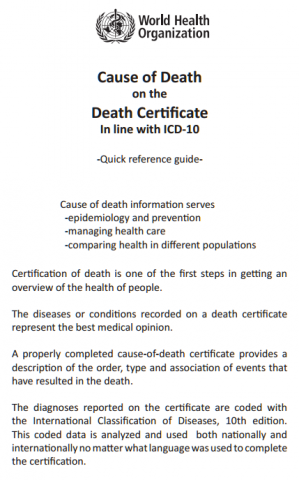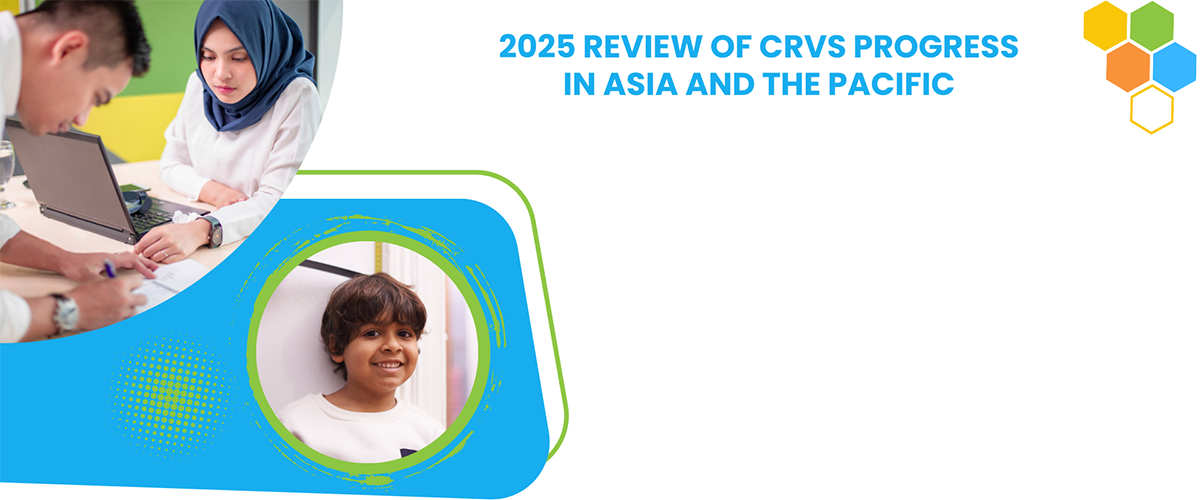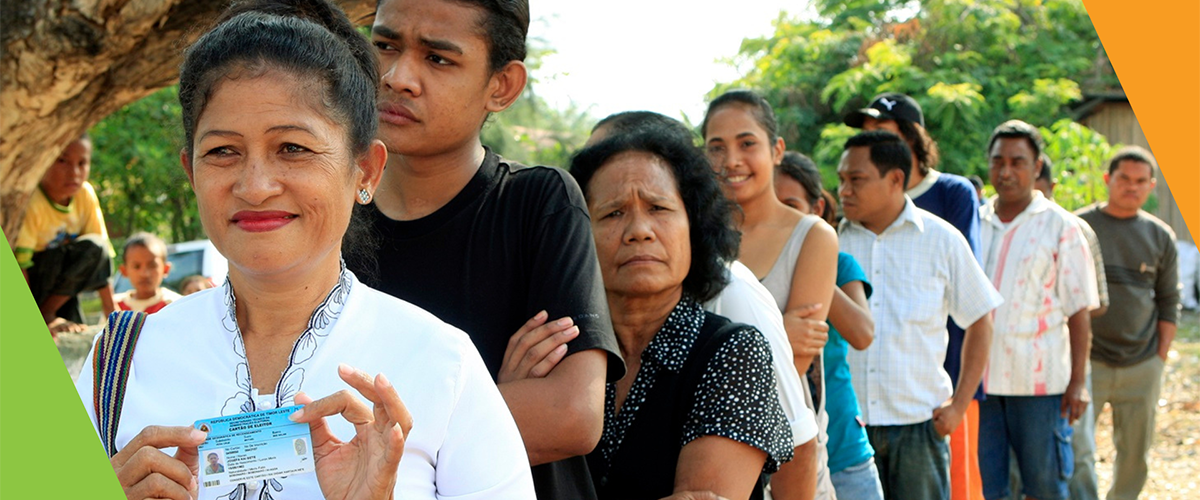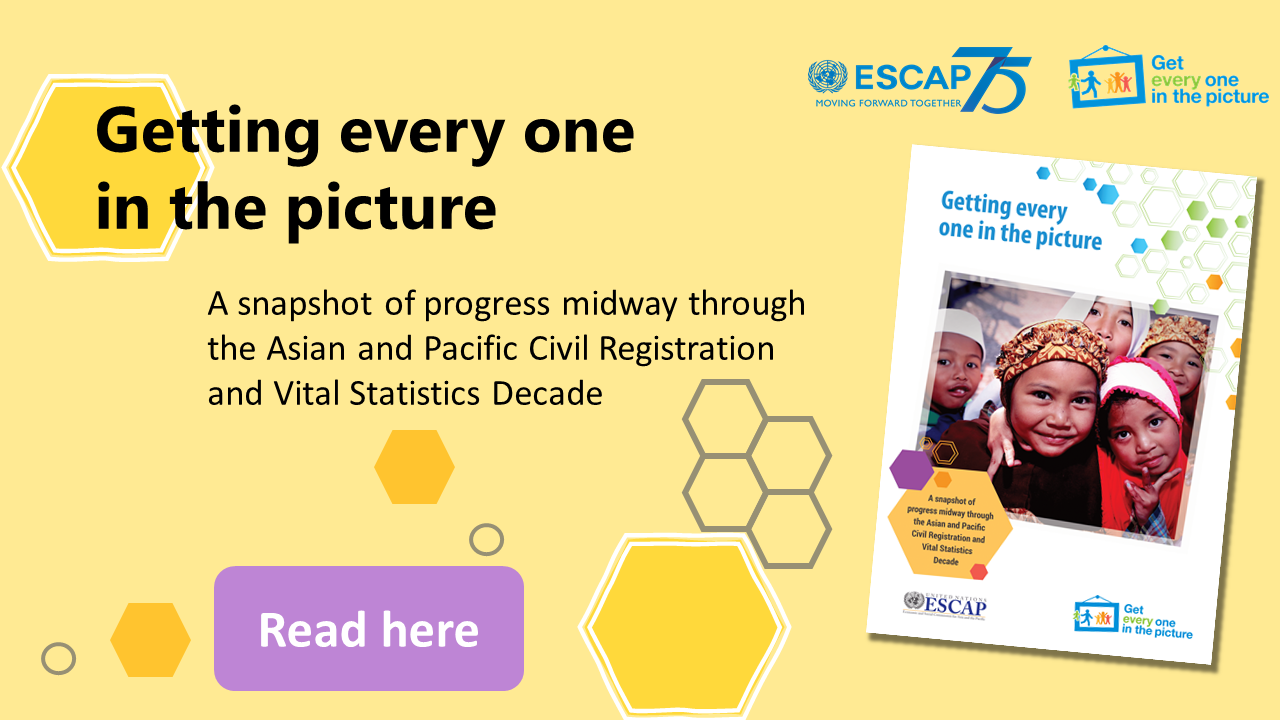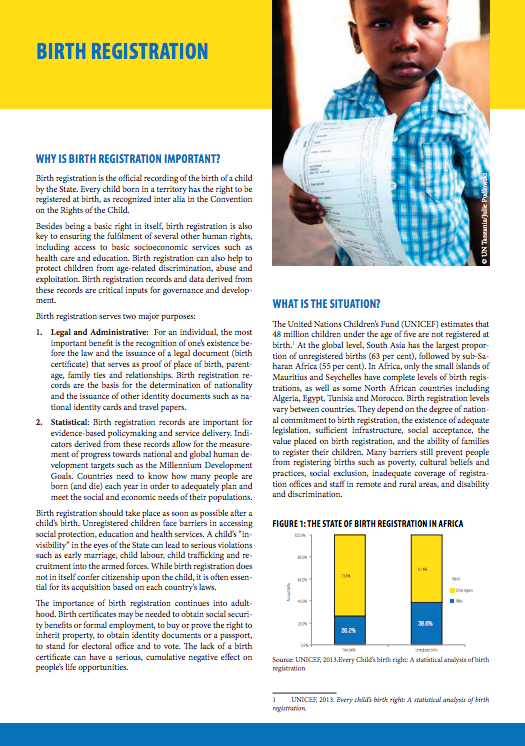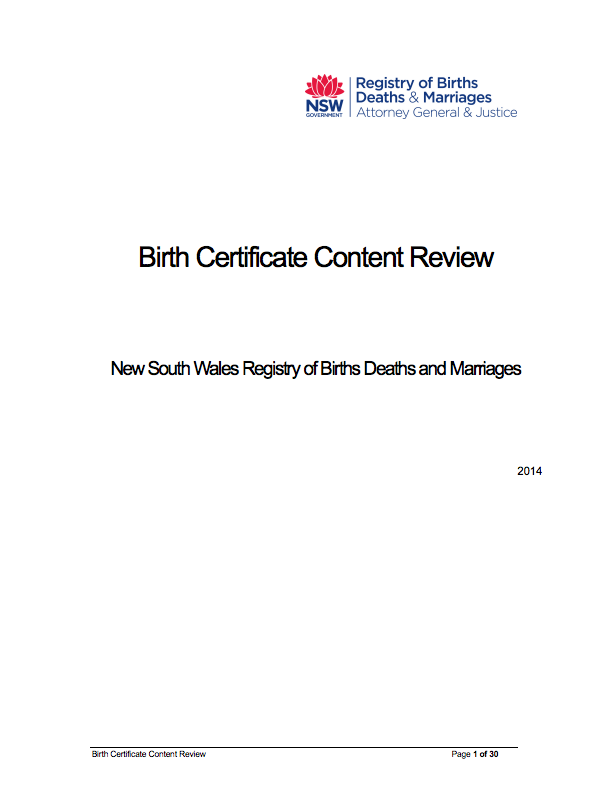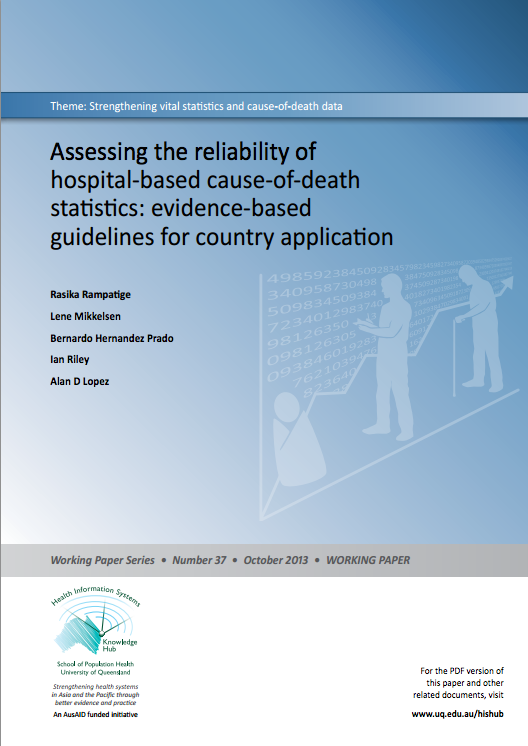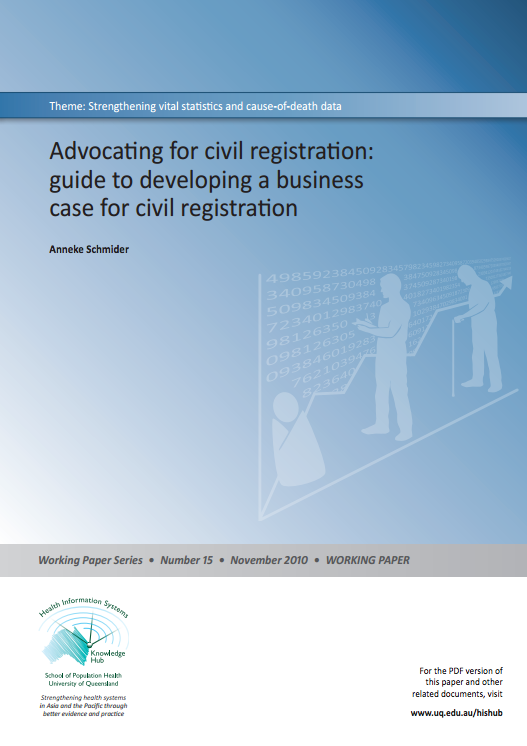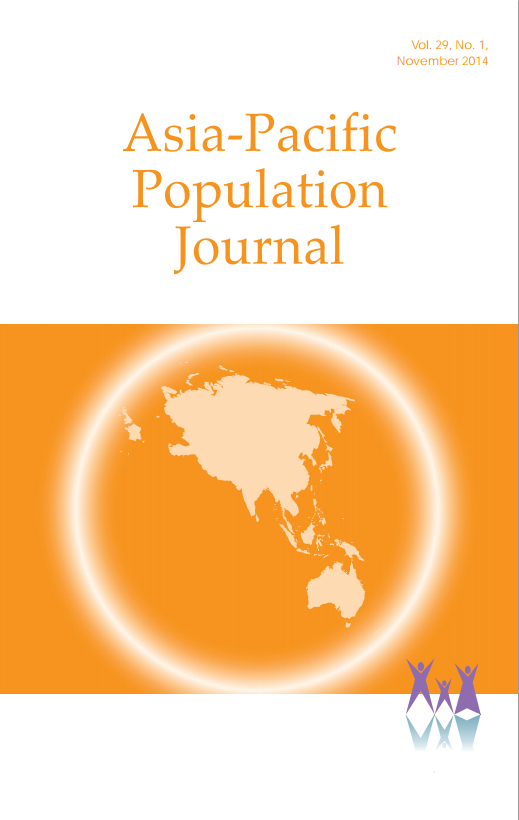Cause of death on the death certificate in line with ICD-10, Quick reference guide
The section on the cause of death on the death certificate is identical worldwide. It has two parts - called Part I and Part II, and a section to record the time interval between the onset of each condition and the date of death.
Part I - is used for diseases or conditions that form part of the sequence of events leading directly to death.
Part II - is used for conditions which have no direct connection with the events leading to death but whose presence contributed to death.
